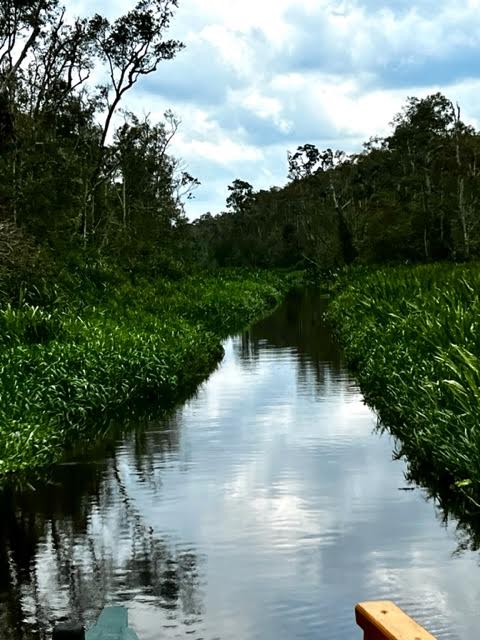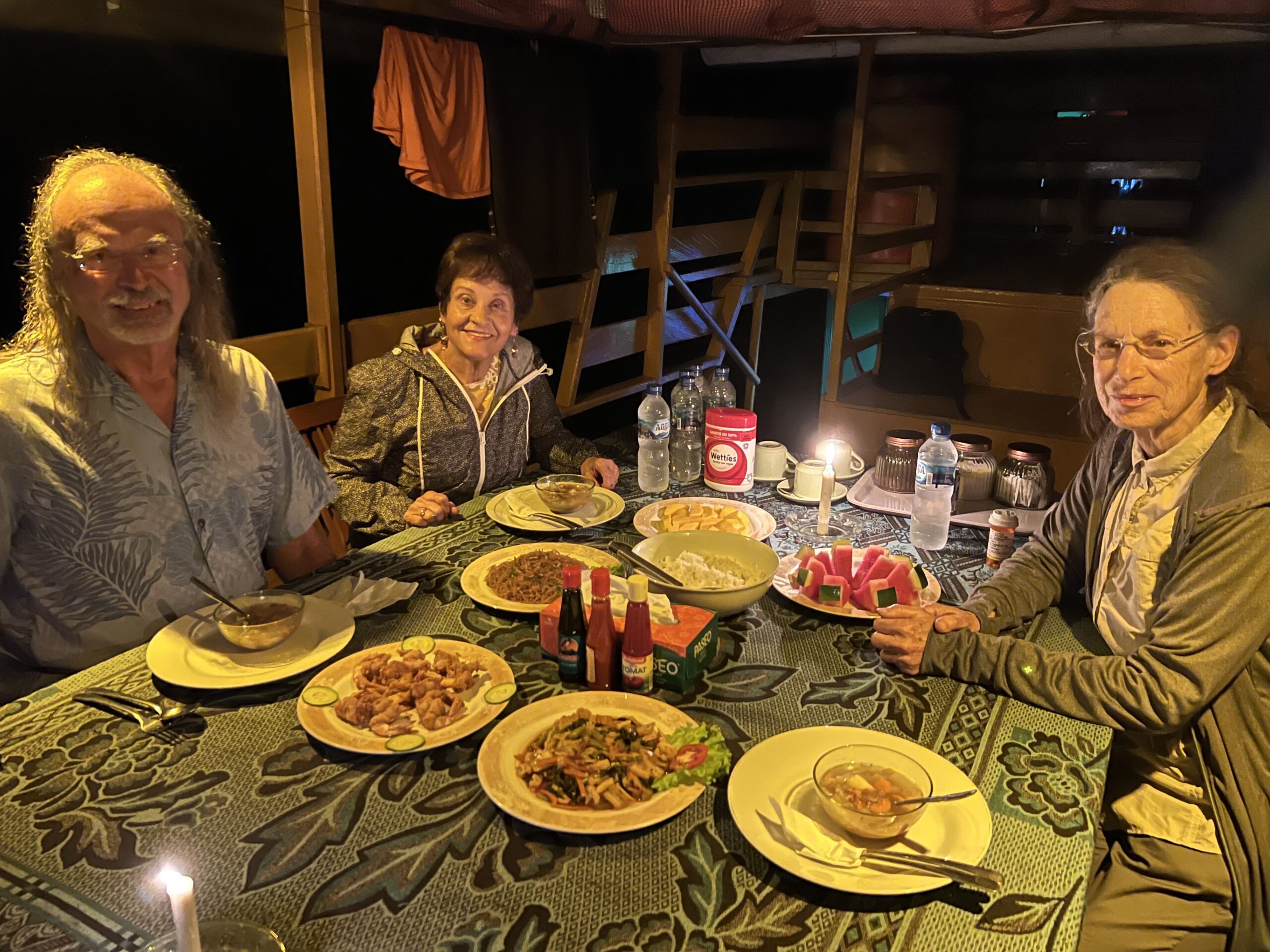Day 2: Monkeys and Apes Encore

The great joy of being at one of the three orangutan feeding stations is watching the great red apes swing in from high tree tops, their extremely long arms seeming to miraculously just catch a tree limb. First you hear and see the rustling tree tops and then the furry orangutan is suddenly moving quickly and descending from tree tops to the platform where their food is laid out for their taking. There are gasps from the audience for the aerial performers as it seems they will just miss and fall but, no, they manage to make it to their next location, seemingly planned in advance.

The routes to the stations are initially over walk ways built of wooden planks about 6 feet above ground. This is due to the deluge of water in the rainy season that sometimes raises the level even a foot or so above the boards. Our guide tells us he remembers within the last few years that a canoe was required to make it to the higher ground.

Once on more solid ground, there is a narrow path hacked out of the jungle, criss crossed with large and small roots and our guide Feri who was raised here in a rural area knows his flora. Julie asked about mushrooms and he stopped and showed us many kinds of mushroom, most of which he said were not eatable, causing hallucinations or worse. He pointed out pitcher plants, nature’s great ant catchers and quinine trees, the traditional prophylactic for malaria. Julie and I held on to a tree for support as we maneuvered around the numerous roots only to be told by Feri as we came to another tree in our path that we should not touch it as it caused severe itching! That was close.

Camp Leakey, named after Louis Leakey of paleontology fame, Is our last feeding stop with mothers and babies arriving for their sweet potatoes and sugar came. In case you are imagining a well maintained national park, this is not the case here. The boards are disintegrating with large gaps and holes in the wood and the nails have loosened causing attention to walking — and there are no rails at all. The docks where the numerous tourist boats dock every day are also in a pitiable state, with steps half rotted and splintered wood everywhere. Given the dependence on tourist dollars (an equivalent of $10 per person for each feeding station) it is surprising that so little effort is put into safe structures for visitors.

The lull of the motor on our boat puts us to sleep as we sit and watch the ever narrowing strip of tributary water ahead of us, with invasive water hyacinths making out forward path more difficult. We gratefully return to our lodge after dinner on board.

We are exhausted from the sun and the heat, good walks to the feeding stations, and good food. We must pack for our departure tomorrow to another part of Kalimantan.

